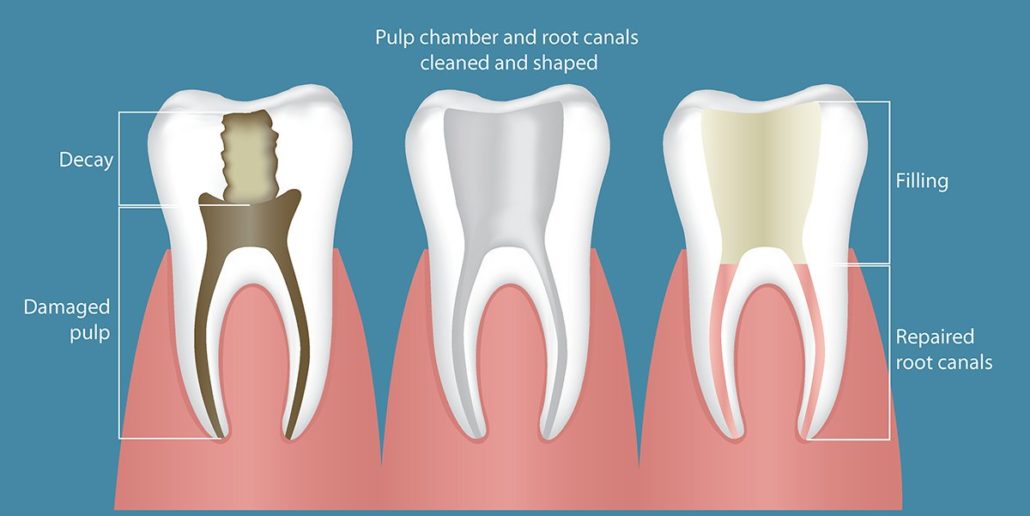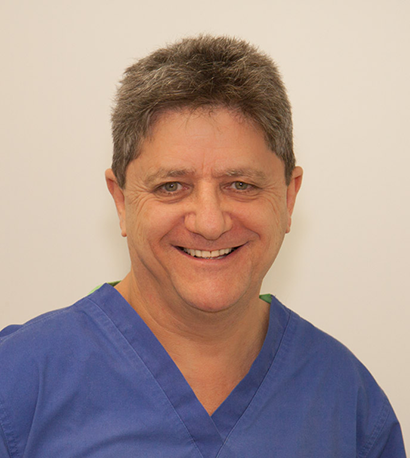Root Canal Therapy
Symptoms that indicate that you may need root canal therapy.
- Moderate to severe lingering pain when drinking hot liquids or eating hot foods. This pain may also be caused with cold liquids or foods.
- Pain when chewing or biting on a tooth that may also be sensitive to touch, tapping or pressure.
- Pain that wakes you up at night.
- Swelling, with or without pain.
- Pain that starts at one tooth and then radiates or is referred to other regions of your upper or lower jaw, or head. A common example is a lower molar (back tooth) causing pain that refers to your ear on the same side so as to simulate an earache.
Often, there are no symptoms associated with a tooth that needs root canal therapy, and the need for treatment is determined from an X-Ray or from testing the pulp.
The pulp (often referred to as ‘the nerve’) is soft tissue that contains nerves, blood vessels and connective tissue. It is contained within the tooth – in the pulp chamber and root canal. The pulp chamber is inside the crown of the tooth; the root canal extends from the pulp chamber to tip of the root.
When the pulp becomes diseased or injured it often can’t heal itself and it dies. The most common causes of pulp death are caries (decay) and cracked teeth.
Both of these problems can let germs (bacteria) enter the pulp, where they cause infection. Untreated, the infection grows and pus builds up in the canal and in the bone around the tip of the root . This accumulation of pus forms an abscess. Sometimes this pus breaks through the bone, causing severe swelling.
The formation of an abscess can be extremely painful, but in some cases (when the abscess grows very slowly) even a large abscess can develop with no pain whatsoever. Such infections are often detected on routine X-Rays.
Unlike other infections in the body, the infection in a root canal cannot be cured with antibiotics. The infection has to physically cleaned out of canal and then the canal sealed to prevent re-infection.

What does treatment involve?
We often manage to complete the treatment in one visit, but in some cases of severe infection more visits may be required. Treatment often involves from one to three visits.
- An opening is made through the crown of the tooth into the pulp chamber.
- The root canal system is cleaned and the canals are enlarged and shaped to a form that can be filled.
- If there is too much infection present to allow the treatment to be completed in one visit, medication to further help with killing the bacteria is placed in the canal system and a temporary filling is placed.
- Once the canal system is clean enough, the root canals are filled and sealed.
- In most cases, a gold or porcelain crown is placed over the tooth.
Need more information?
For more information about our dental practice in general, or if you have a specific question about your dental care needs, please call us on (02) 8883 4560, email our dental practice at [email protected] or send us a message below and we will do our best to help you.
How can our dental practice help you with your dental care needs?
Whether your dental care needs are a regular dental check-up or you require more comprehensive dental care, the team at our dental practice will do our best to provide you with the best possible advice and care.
Want more information about our dental practice?
For more information about our dental practice in general, or if you have a specific question about your dental care needs, please call us on (02) 8883 4560, email our dental practice at [email protected] or send us a message below and we will do our best to help you.



